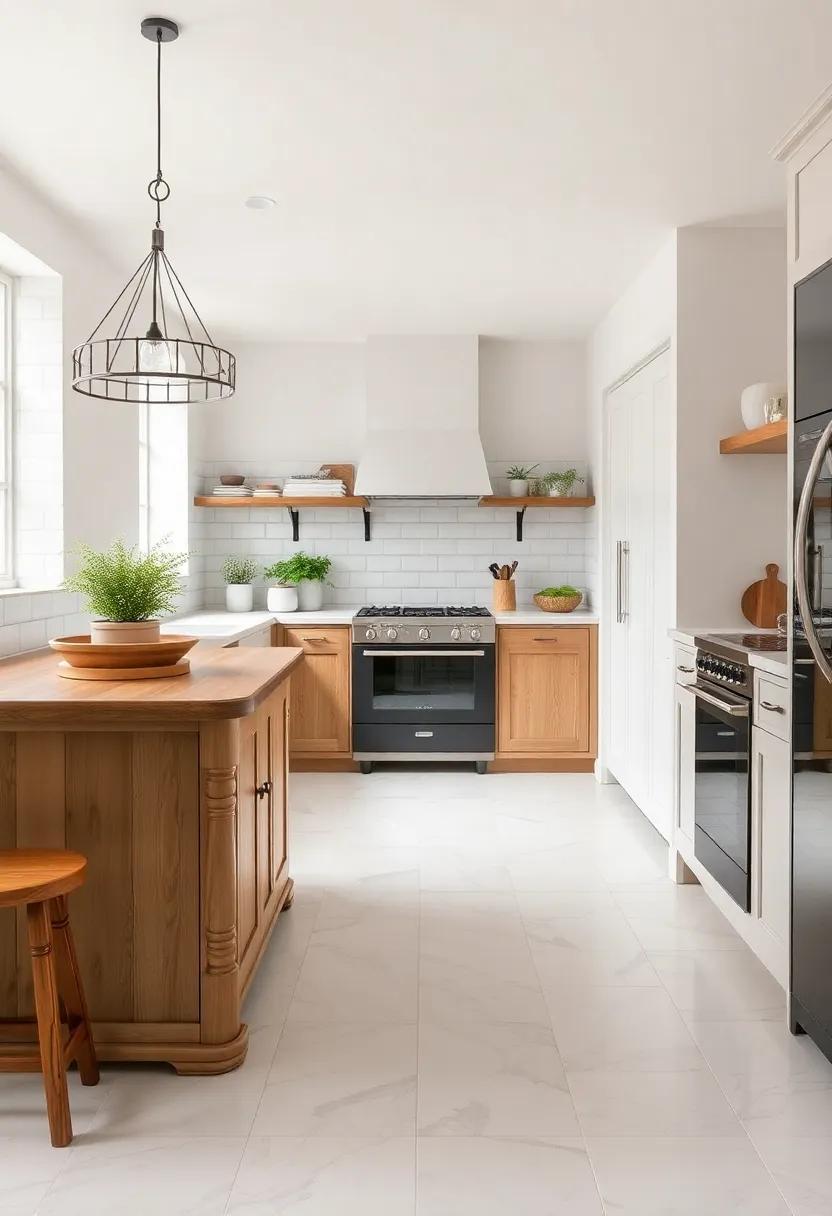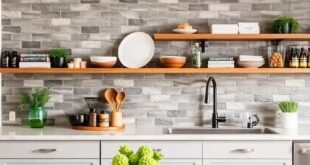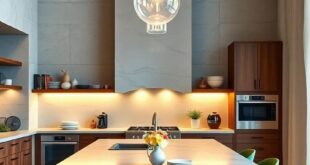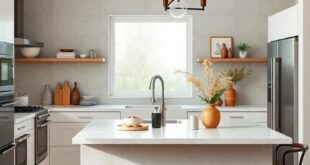In the heart of a home, where warmth and nostalgia intertwine, lies the kitchen—a space that beckons family and friends to gather, share stories, and create memories. When designing a cottage kitchen, every detail matters, and the floor beneath our feet is no exception. The right tiles can set the tone for a cozy atmosphere, echoing the beauty of nature while providing durability for daily life. From the earthy hues of terracotta to the cool charm of vintage-inspired ceramics, the options are both abundant and inspiring. Join us as we explore the essential qualities to consider in choosing the perfect cottage kitchen floor tiles, transforming your culinary haven into a rustic retreat that invites both creativity and comfort.
Embrace Nature: The Allure of Natural Stone Tiles for Cottage Kitchen Floors
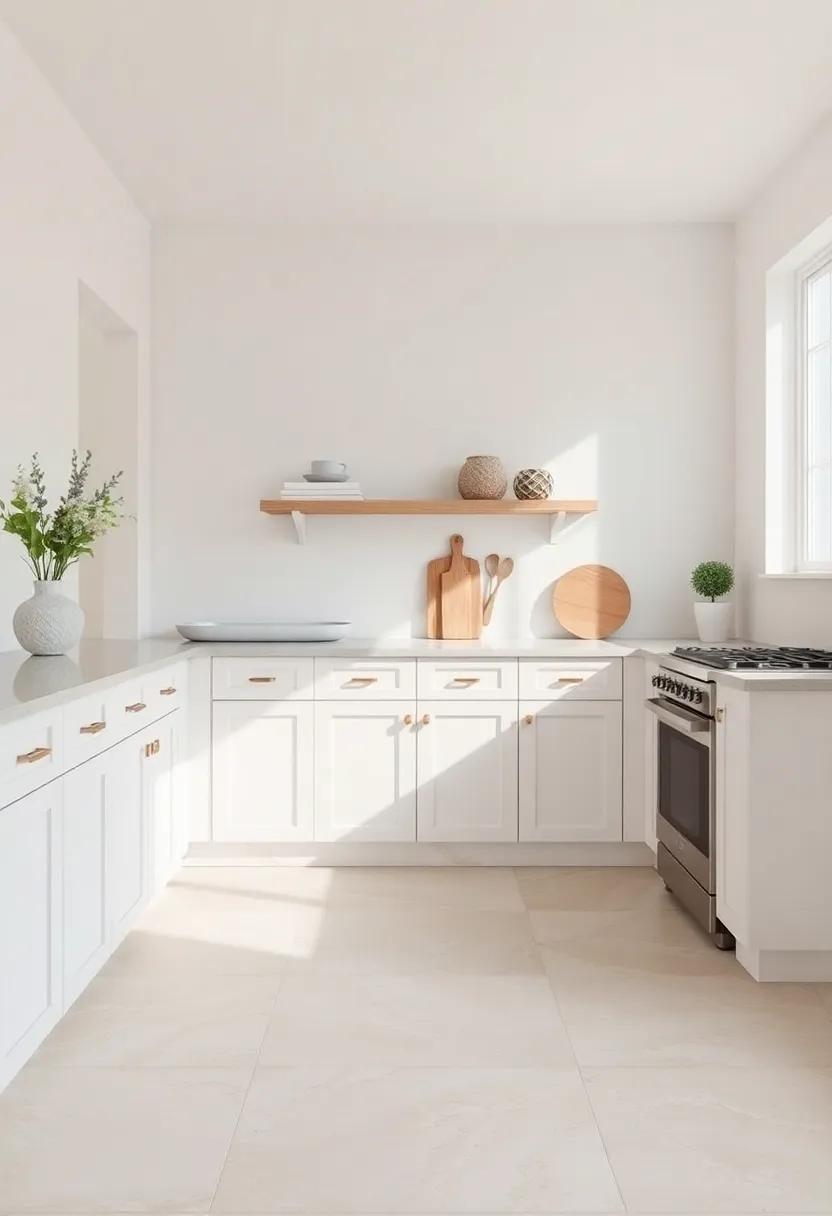
Natural stone tiles bring a timeless appeal to cottage kitchens, inviting the essence of the great outdoors inside. Their unique textures and earthy tones can transform an ordinary kitchen into a cozy retreat, evoking the charm of rustic living. Every stone tells a story, with variations in color and patterns that reflect nature’s artistry. When stepping onto a floor made of slate,travertine,or limestone,you not only feel the coolness beneath your feet but also connect with the earth,creating a serene atmosphere that resonates with comfort and style.
Incorporating natural stone tiles allows for a harmonious blend of aesthetics and practicality. Thes materials are known for their durability and ability to withstand the wear and tear of daily life in a busy kitchen. Consider the following advantages of natural stone tiles:
- Durability: Resistant to scratches and stains.
- Unique design: Each tile is one-of-a-kind, adding character.
- Thermal Properties: Keeps the kitchen cool in summer and warm in winter.
- Eco-Pleasant: Made from natural materials, reducing environmental impact.
Warmth of Wood: Exploring Timeless Wooden Tile Options for Cottage Kitchens
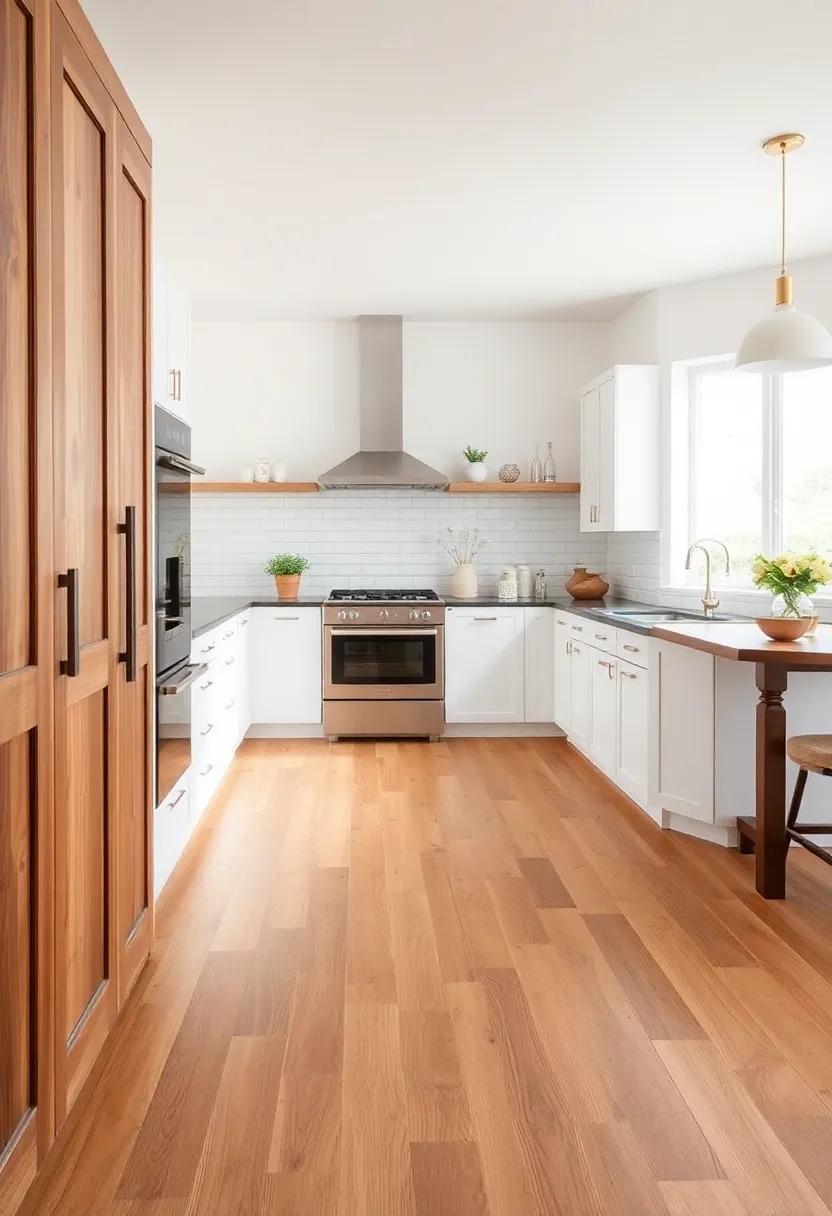
The allure of wooden tiles in a cottage kitchen transforms the space into a warm embrace of rustic beauty. With their natural textures and rich tones, these tiles offer the charm of traditional wood flooring while providing the durability and ease of maintenance that modern homeowners desire. Whether you’re leaning towards a light oak for a sunlit feel or a dark walnut to create a cozy ambiance, the options are endless. Explore various finishing styles to further enhance their appeal, such as distressed or reclaimed looks that evoke a sense of history.
In selecting the perfect wooden tile for your cottage kitchen, consider these distinctive attributes:
- Texture Variety: From smooth finishes that reflect light to textured surfaces that add depth, choose what fits your aesthetic.
- Eco-Friendly Choices: Many brands now offer lasting options, ensuring your flooring choice aligns with your environmental values.
- Seamless Installation: With interlocking designs, wooden tiles can be installed easily without sacrificing structural integrity.
To guide your selection further, here’s a simple comparison of popular wood tile options:
| Type | Finish | Pros |
|---|---|---|
| Porcelain Wood Tile | Smooth | Scratch-resistant, easy to clean |
| Natural Wood Tile | Distressed | Warm aesthetics, unique grain patterns |
| Laminate Wood Tile | Matte | Cost-effective, versatile styles |
Tile Textures: the Impact of Texture in Rustic Kitchen Floors
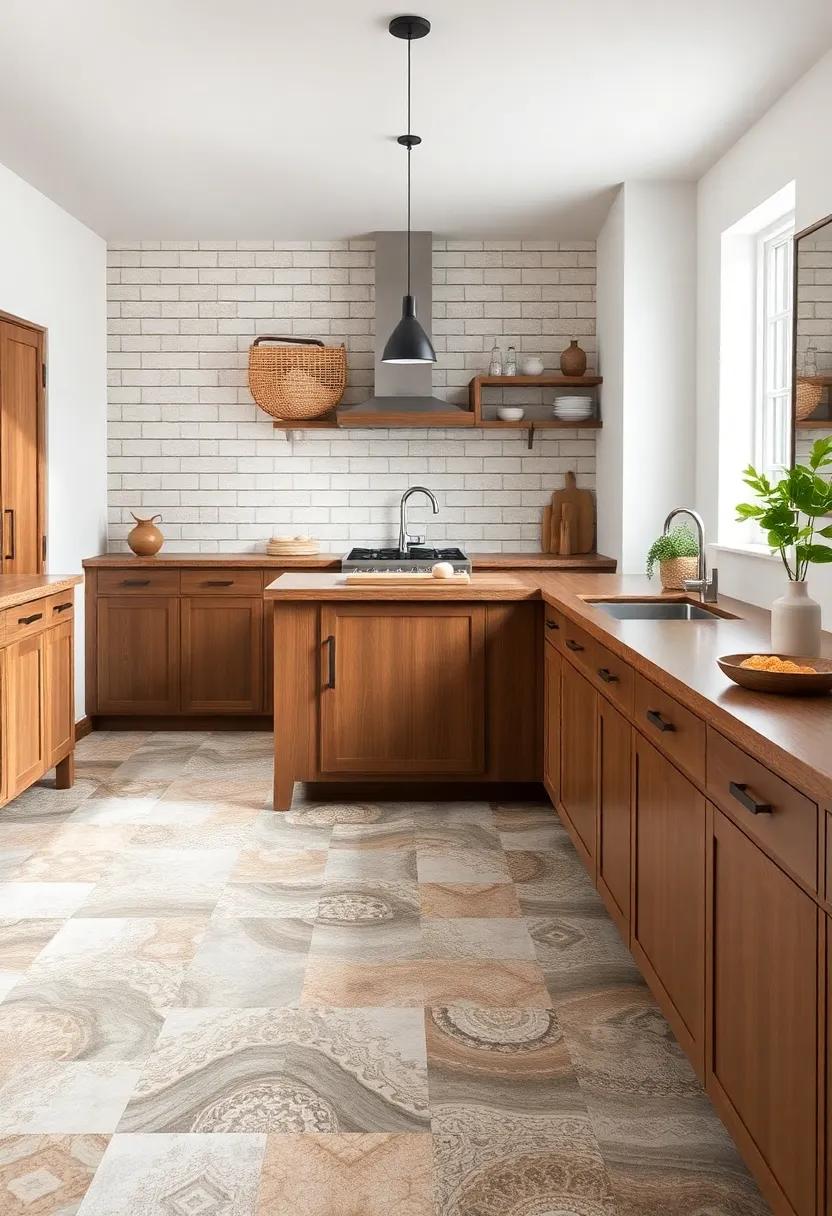
The texture of tiles plays a pivotal role in establishing the aesthetic and functional aspects of rustic kitchen floors. Emphasizing natural elements, textured tiles bring a sense of warmth and earthiness that reflects the charm of cottage living. These tiles can range from rough-hewn surfaces resembling weathered wood to artisanal ceramics that evoke the feel of traditional craftsmanship. Such variations offer a tactile experience that not only enhances the visual appeal but also contributes to a cozy, lived-in atmosphere.
When selecting tiles for a rustic kitchen, consider options that incorporate non-slip properties and natural finishes. This combination ensures both safety and style, making your kitchen floor not just attractive, but practical as well. Ideal textured tile features include:
- Distressed Finishes: Create an aged look that integrates seamlessly with rustic decor.
- Uneven Surfaces: Add depth and character, mimicking the feel of natural materials.
- Natural Stone Patterns: Introduce organic designs that draw the eye and highlight nature’s beauty.
| Tile Type | Texture Feature | Benefits |
|---|---|---|
| Terracotta | Rough, rustic | Warmth & timeless appeal |
| Slate | Natural clefts | Slip-resistant & durable |
| Ceramic | Textured glaze | Variety of colors & patterns |
Colors of the Earth: choosing Earthy Tones for a Cottage Feel
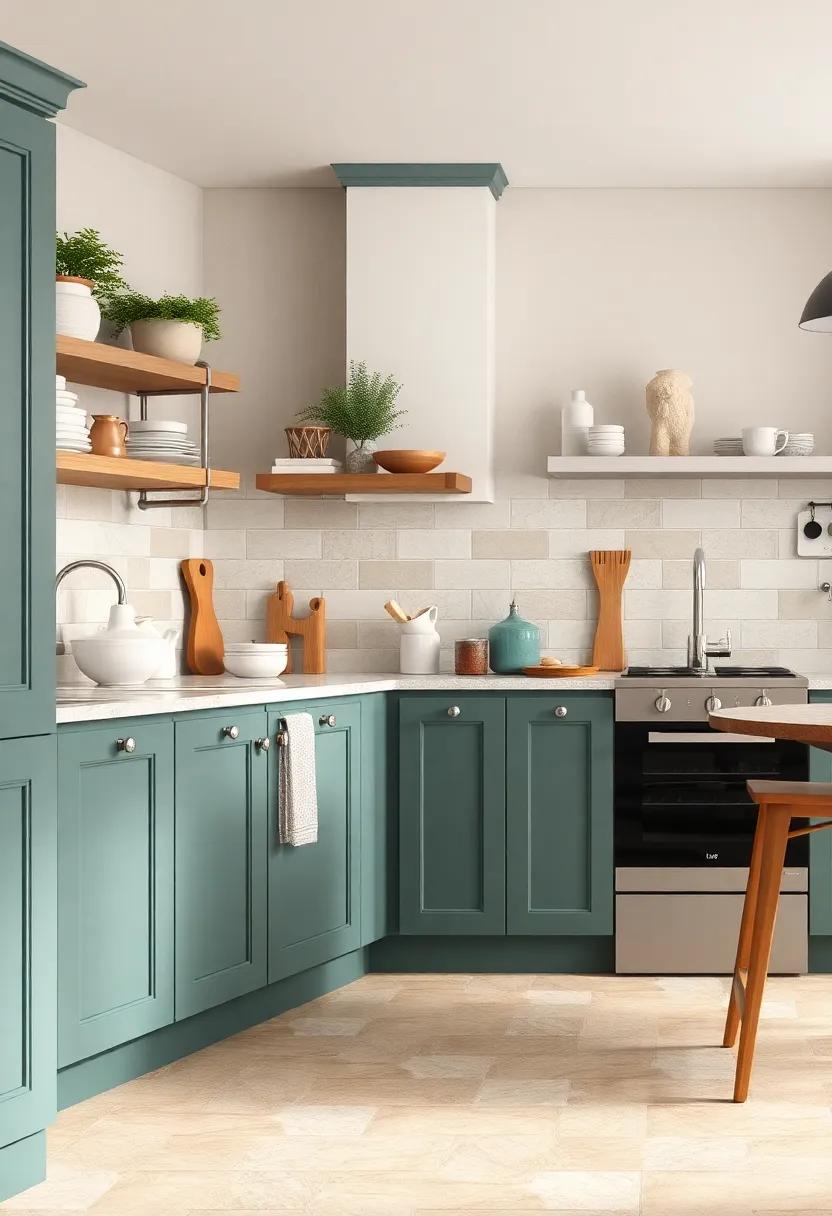
When aiming to create a cozy, inviting atmosphere typical of cottage aesthetics, incorporating earthy tones into your kitchen floor tiles is essential. These hues not only ground the space but also evoke a sense of warmth and organic connection to nature. Consider tiles in shades of terracotta, deep browns, soft greens, and muted grays. The subtle variation among these colors can add depth to your design, transforming the flooring into a visual element that complements wooden cabinets and rustic decor.
Pair your earthy-toned tiles with natural textures to enhance the rustic charm. For instance, textured finishes on tiles can mimic the look of weathered stone or reclaimed wood, fostering an authentic cottage feel. Here are some practical pairings to consider:
- Terracotta tiles with artisan-style ceramics
- Deep brown tiles combined with cream or beige cabinetry
- Soft green accents alongside floral prints in linens
If you’re looking to visualize how various earthy tile options fit into your kitchen, here’s a quick comparison table:
| Tile Color | Ideal Pairings | Suggested Style |
|---|---|---|
| Terracotta | Wood accents, White cabinetry | Traditional Farmhouse |
| Deep brown | Metallic fixtures, Vibrant greens | Modern Rustic |
| Soft Green | Natural wood, Light neutrals | Country Chic |
Pattern Play: The Charm of Mosaic Tiles in Cottage Kitchen Design
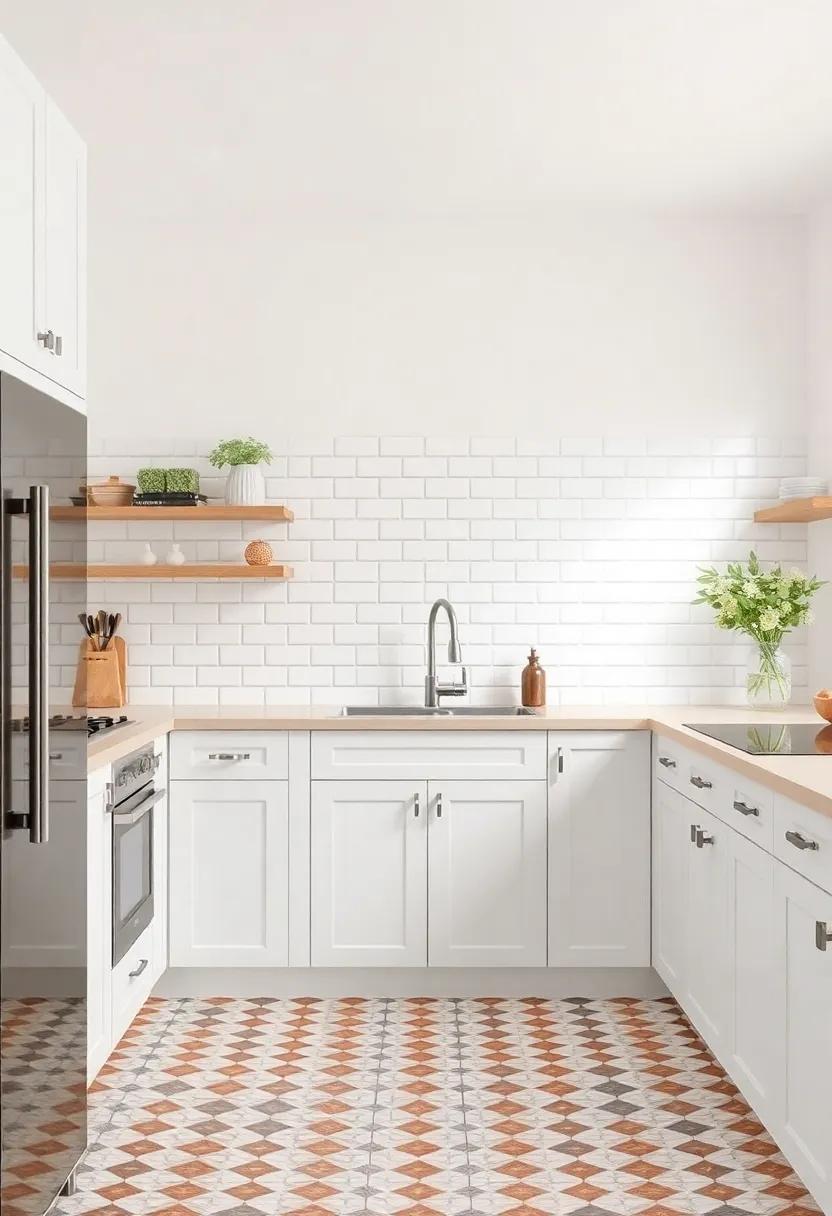
Ther’s a timeless elegance to mosaic tiles that can instantly elevate the aesthetic of a cottage kitchen.These unique pieces create a tapestry of colors and shapes, allowing for playful experimentation. With their vintage appeal, mosaic tiles can effortlessly tie together rustic elements and modern conveniences, providing a textural contrast that draws the eye.The intricate patterns can be a great way to highlight focal points,such as a kitchen island or a backsplash,making your culinary space both functional and beautiful.
When selecting mosaic tiles, consider their size and color palette to ensure harmony with your overall design. Here are some factors to keep in mind:
- Material: Opt for durable materials like ceramic or porcelain for a long-lasting finish.
- Color Variation: Choose a mix that aligns with your kitchen’s color scheme—soft pastels for a gentle look or bold hues for a vibrant statement.
- Pattern Complexity: Simple patterns work well for smaller spaces, while more detailed designs can be a stunning focal point.
| Tile Style | Ideal Space | Color Suggestions |
|---|---|---|
| Geometric | Backsplashes | White,Gray,Black |
| Floral | Kitchen Islands | Pastels,Earthy Tones |
| Abstract | Flooring | Shining Colors,Bold Contrasts |
Vintage Vibes: Incorporating Retro Tiles for a Touch of Nostalgia
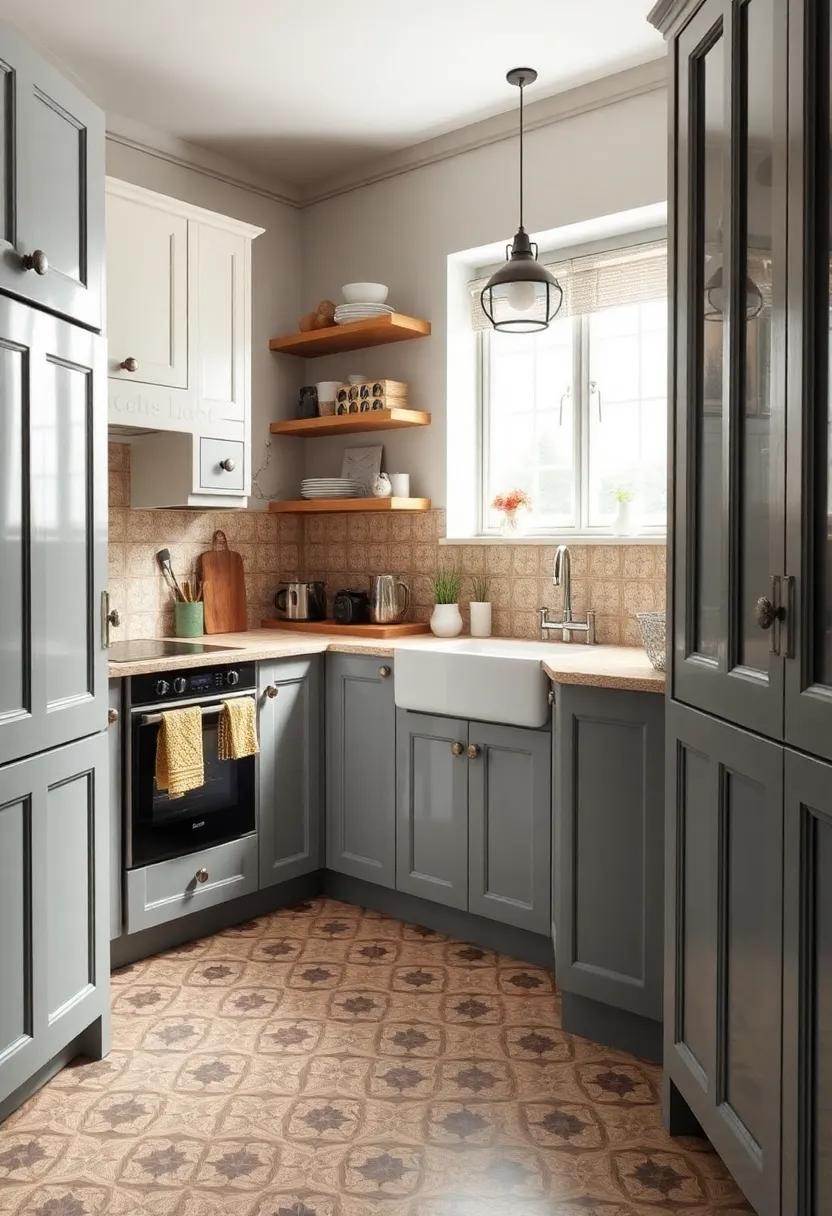
transforming your cottage kitchen into a nostalgic haven is easier than you might think, especially when you embrace the allure of retro tiles. These charming pieces not only add character but also create a conversation starter in your kitchen.Consider incorporating subway tiles with a glossy finish to mimic the classic diner aesthetic, or explore the intricate patterns of Moorish or Victorian tiles that evoke a rich history. You can experiment with color by choosing soft pastels or bold primary shades, each offering a unique throwback feel that aligns with your personal taste.
When selecting tiles, think about how they can tie in with other elements of your kitchen. Pairing them with wooden cabinets or butcher block countertops can enhance that rustic charm. For added flair, consider creating a mosaic backsplash that blends various tile types and colors, celebrating the eclectic spirit of the past.A quick reference table can help visualize your choices:
| Tile Type | Key Features |
|---|---|
| Subway Tiles | Versatile, easy to clean, timeless design |
| Moorish Tiles | Intricate patterns, Mediterranean flair, vibrant colors |
| Victorian Tiles | Classic, ornate designs, antique vibe |
| Cement Tiles | Bold patterns, durable, adds texture |
Bold and Beautiful: Embracing Colorful Tiles in Rustic Kitchen Spaces
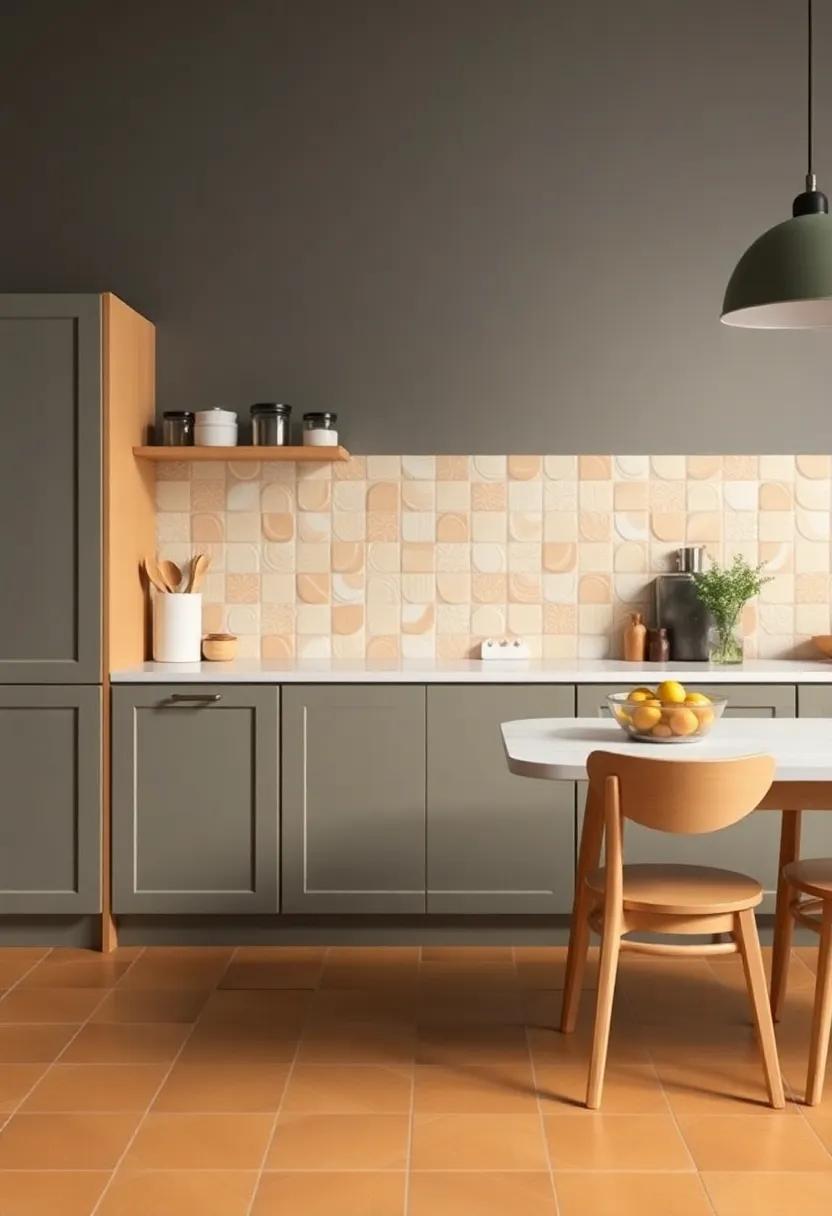
Infusing a rustic kitchen with colorful tiles can completely transform the space, blending the charm of cottage life with vibrant energy. Imagine stepping onto a floor adorned with intricate patterns or bold hues that complement the warm, wooden features characteristic of rustic kitchens.Terracotta, hand-painted ceramic, and colorful encaustic tiles not only add a layer of visual intrigue but also bring a delightful texture underfoot. Selecting tiles that celebrate the beauty of nature with earthy tones or rich, jewel-like colors creates a harmonious habitat, enhancing the homey feel.
When choosing your tiles, consider opting for a mix of sizes and shapes to create a unique, dynamic look. A few inspiring ideas might include:
- Patchwork styles: Combining different tiles can create a story, reflecting both modern aesthetics and traditional craftsmanship.
- Bold accents: Use colorful tiles as a border or a focal point in the kitchen to draw attention to specific areas, such as an island or around the stove.
- Natural finishes: Matte or slightly textured tiles can provide safety and comfort, especially in high-traffic areas where spills are likely.
To assist in your selection, here is a simple table showcasing popular tile colors and their corresponding rustic style compatibility:
| Tile Color | Stylish Pairing |
|---|---|
| Warm Terracotta | Wooden Cabinets |
| Ocean Blue | White shaker Style |
| Sunset Orange | Farmhouse Sink |
Cozy Comfort: The Benefits of Using Cork Tiles in a Cottage Kitchen
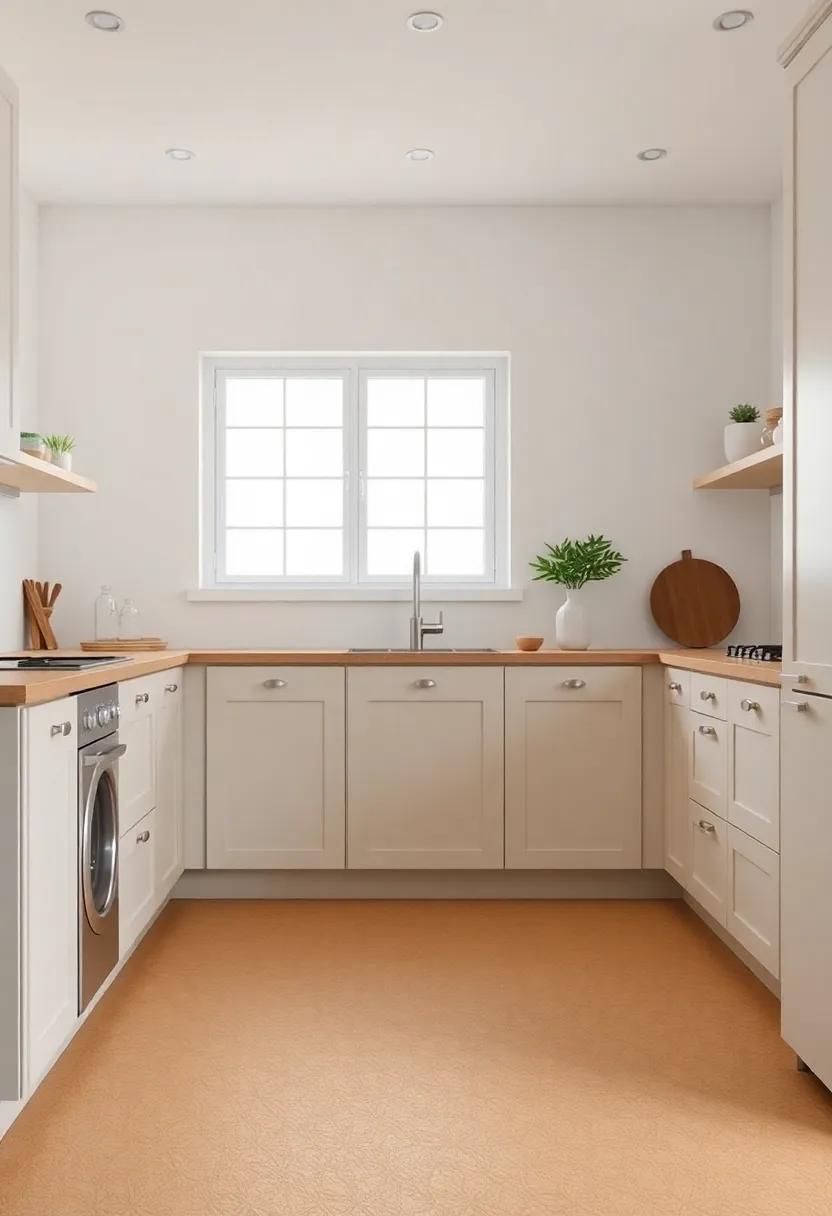
Cork tiles offer an unparalleled combination of comfort and functionality, making them an ideal choice for cottage kitchens. Their natural texture and warmth create a cozy atmosphere, enhancing the homey feel that cottages embody. When you step onto cork flooring, you’ll immediately notice its softness, which is gentle on the feet, reducing fatigue during those long cooking sessions. Additionally, cork is a natural insulator, helping regulate temperature and maintain warmth in cooler months, which is especially beneficial in rustic kitchens with an inviting yet practical layout.
The ecological benefits of cork tiles further add to their appeal. Cork is harvested from the bark of cork oak trees in a sustainable manner, allowing for a renewable resource that minimizes environmental impact. By choosing cork flooring, you not only embrace a style that complements rustic aesthetics but also support eco-friendly practices. Consider these key advantages of cork tiles:
- Sound Absorption: Cork naturally dampens noise, creating a serene kitchen environment.
- Durability: Resistant to wear and tear, they stand the test of time while retaining their charm.
- hypoallergenic Properties: Perfect for maintaining a healthy kitchen free from mold and allergens.
- Easy Maintenance: Simple to clean and maintain, cork tiles are practical for busy households.
radiating Warmth: The Role of Underfloor Heating with Tiles
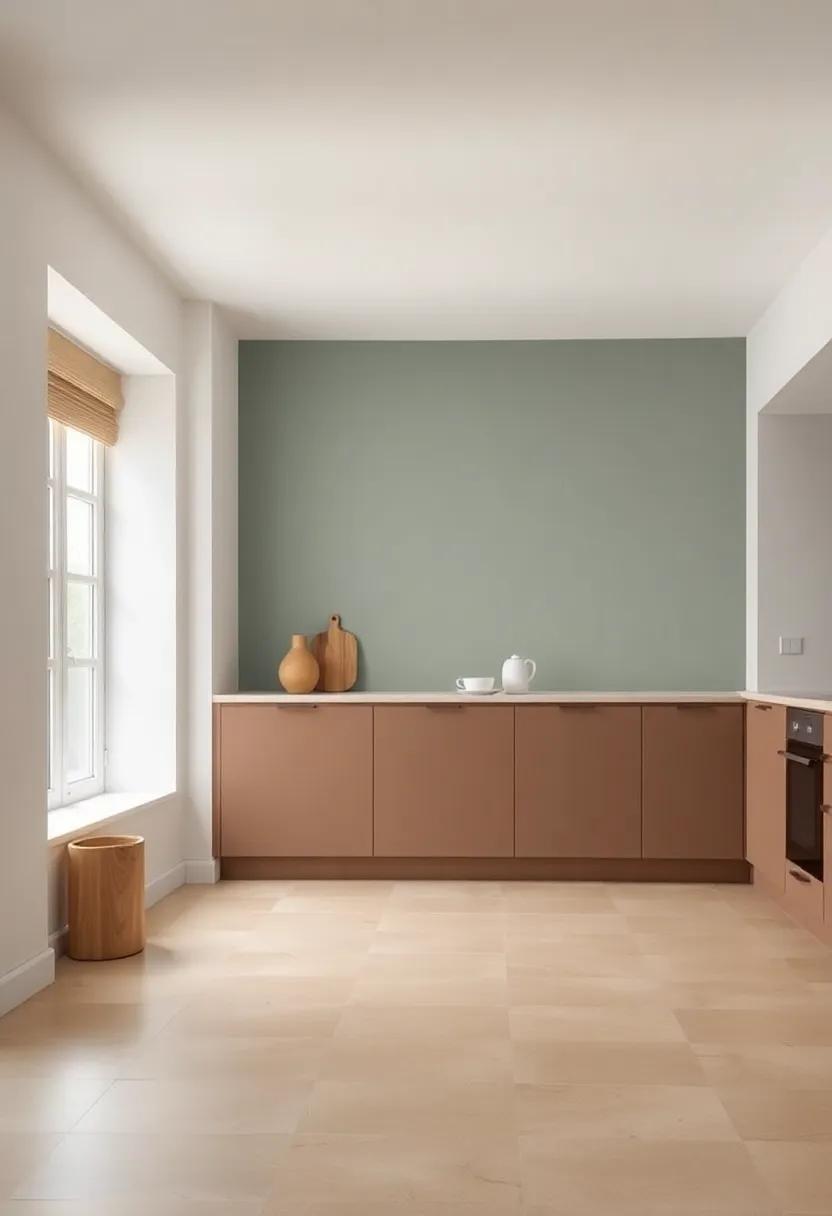
underfloor heating combines efficiency and comfort, notably in a cottage kitchen where the rustic aesthetic harmonizes with functionality. When paired with tiles, this heating system creates an inviting warmth that permeates the floor, transforming the space into a cozy haven during colder months. The synergy of heated tiles ensures optimal temperature control, allowing you to walk barefoot on the soothing surface without the chill of the outside creeping in. Imagine stepping into your kitchen on a brisk morning, greeted by the gentle warmth that invites you to linger over your morning coffee.
Choosing the right tile material enhances this experience,as certain types of tiles offer superior heat retention and conductivity. Consider materials such as:
- Ceramic – Versatile and durable, excellent for consistent heat distribution.
- Porcelain – More dense and moisture-resistant, ideal for areas prone to spills and humidity.
- Natural stone – Provides a luxurious feel and retains warmth beautifully, though it may require additional care.
This thoughtful selection not only elevates your kitchen’s aesthetic but also contributes to energy efficiency, making underfloor heating an intelligent investment for any cottage kitchen renovation.
Eco-Friendly Choices: Sustainable Tile Options for Your Cottage Kitchen
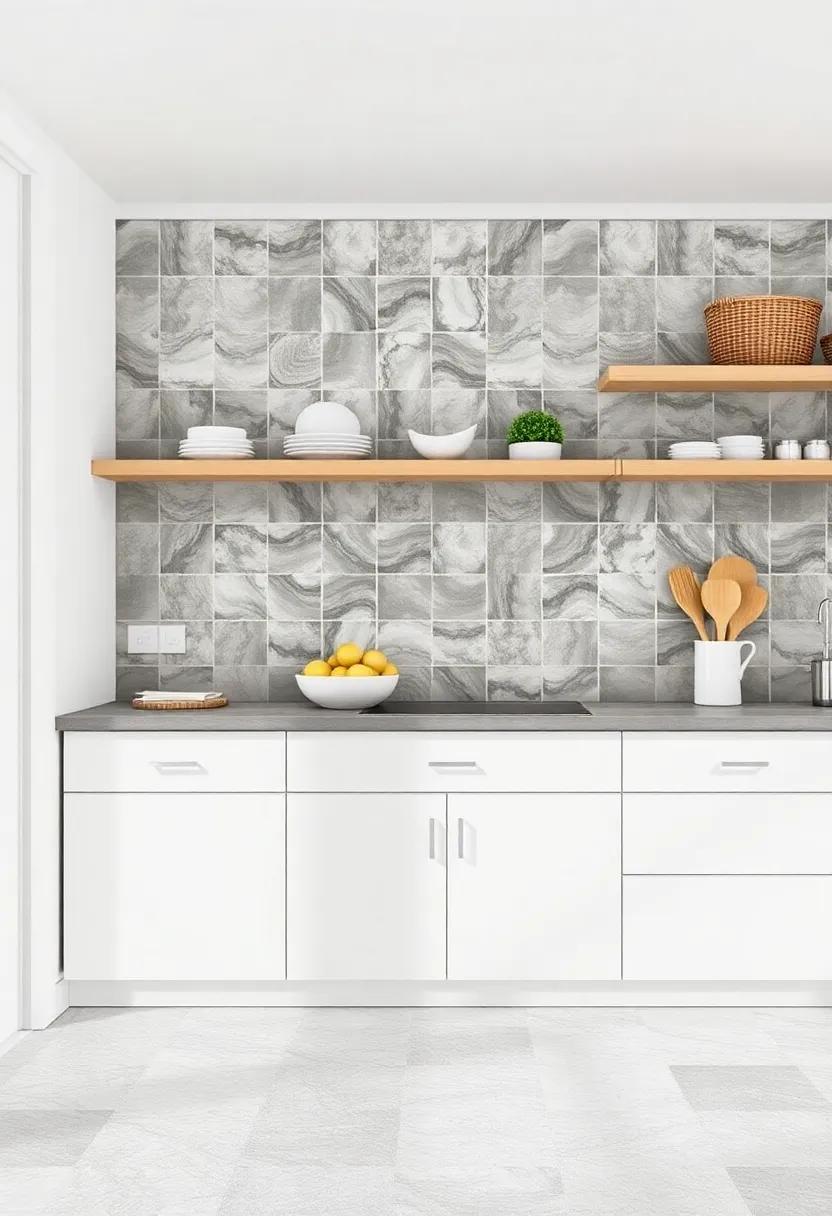
When selecting tiles for your cottage kitchen, consider sustainable materials that not only enhance the rustic charm but also align with eco-conscious practices. Options such as recycled ceramic and natural stone are excellent choices. Recycled ceramic tiles are made from previously used materials, drastically reducing waste and minimizing the environmental footprint. Conversely, natural stone tiles, like slate or limestone, offer unique textures and colors that blend beautifully with the cottage aesthetic while being biodegradable and less harmful to the planet.
Another eco-friendly option to consider is cork tiles, harvested from the bark of cork oak trees without harming them, ensuring sustainability and durability. Investing in tiles made from sustainably sourced materials offers benefits such as improved indoor air quality, thanks to their low VOC emissions. Here’s a quick comparison of some sustainable tile options:
| Tile Type | Sustainability Features | Style Versatility |
|---|---|---|
| Recycled Ceramic | Low waste production, eco-friendly manufacturing | Available in various colors and patterns |
| Natural Stone | Biodegradable, sustainability from natural sources | Unique designs, perfect for rustic themes |
| Cork | Renewable resource, non-toxic | Warm, inviting look, great for cozy spaces |
Bright and Breezy: Using Light-Colored Tiles for an Airy Cottage Kitchen
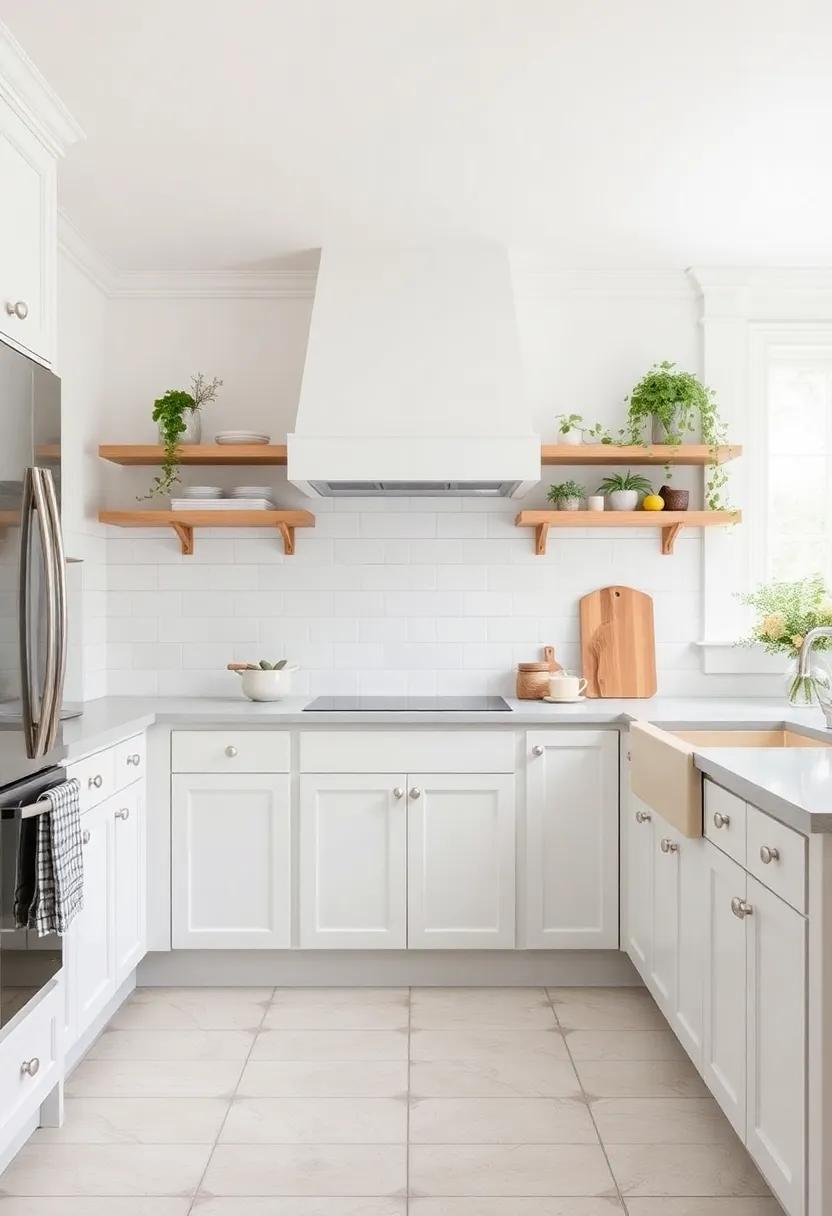
Light-colored tiles can transform a cottage kitchen into a sanctuary of brightness and warmth. Utilizing shades like soft whites,pale creams,or light pastels can create an inviting atmosphere that pairs beautifully with rustic elements.These hues not only enhance the natural light in the space but also make the room appear larger and more open. Consider tiles with subtle textures or patterns to add depth while maintaining a clean, airy feel. When combined with wooden beams and vintage furnishings,light-colored tiles serve as the perfect backdrop,allowing the unique features of a cottage kitchen to shine.
To maximize the effect of light tiles, think about their placement and the overall design scheme. Here are some tips to consider:
- Contrast with Darker Accents: Pair light tiles with darker countertops or cabinetry to create visual interest.
- Mix Materials: Incorporate different textures, such as natural stone or shiplap, to add warmth and character.
- Focus on Grout Color: Opt for a grout color that complements your tile choice for a seamless look.
For a functional yet stylish kitchen, explore the following tile options:
| Tile Type | Benefits |
|---|---|
| Ceramic | Durable and easy to clean, available in numerous light colors. |
| Porcelain | Water-resistant and suitable for high-traffic areas. |
| Natural Stone | Unique textures and patterns that add authenticity. |
Timeless Terracotta: The Classic Appeal of Terracotta Tiles in Cottage Design
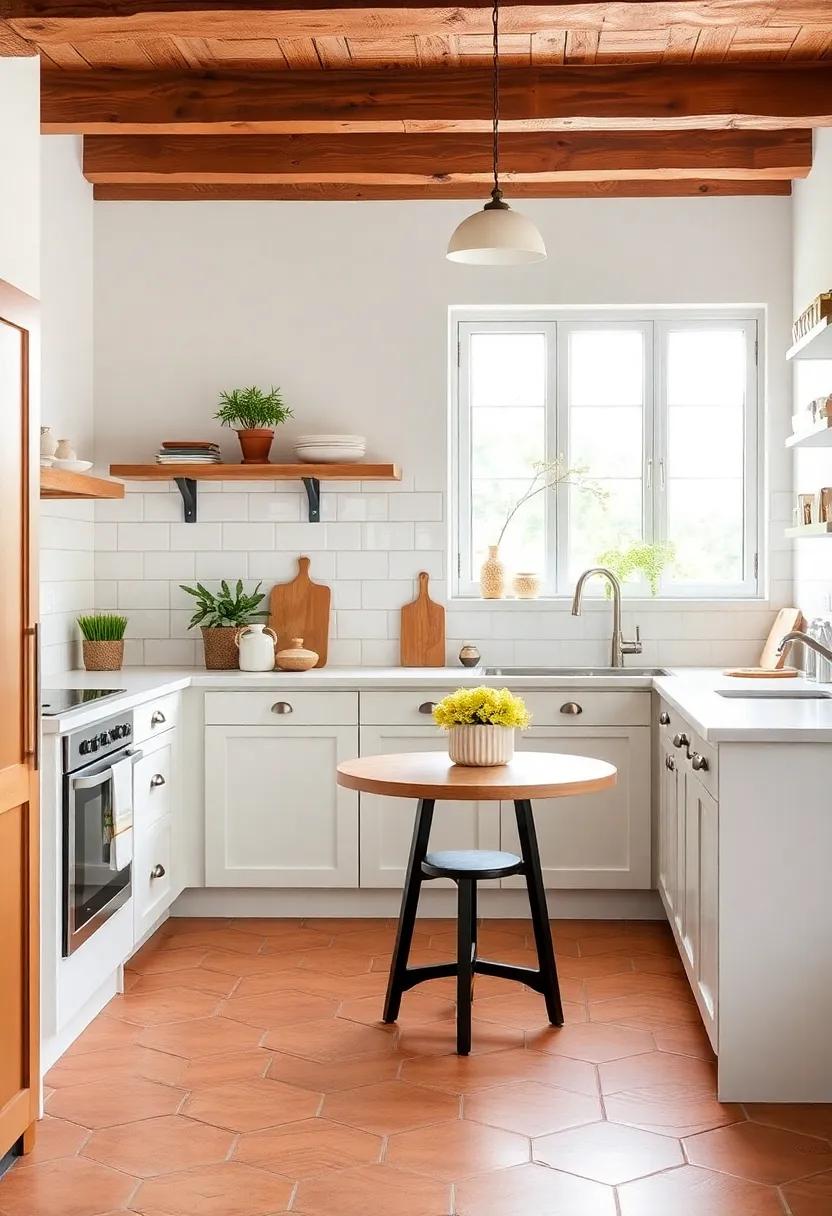
Terracotta tiles bring a warm earthiness that seamlessly complements the rustic aesthetic typical of cottage design. These versatile tiles are not just about beauty; they offer a durability that stands the test of time, making them a practical choice for a kitchen where everyday life unfolds. With their rich,natural hues,terracotta tiles evoke a sense of simplicity and authenticity,making them an ideal foundation for any cottage kitchen.
Opting for terracotta tiles allows for a variety of styles to emerge within the space, from traditional to modern. Consider the following elements when selecting the perfect tiles:
- Color Variation: Each tile features a unique blend of tones,ensuring that no two kitchens look the same.
- Finish Options: Choose between matte, glossy, or textured finishes to match your preferred aesthetic.
- Size preferences: Larger tiles can create a more open feel, while smaller tiles can add intricate patterns.
Geometric designs: The Contemporary Twist in Rustic Kitchen Tiles
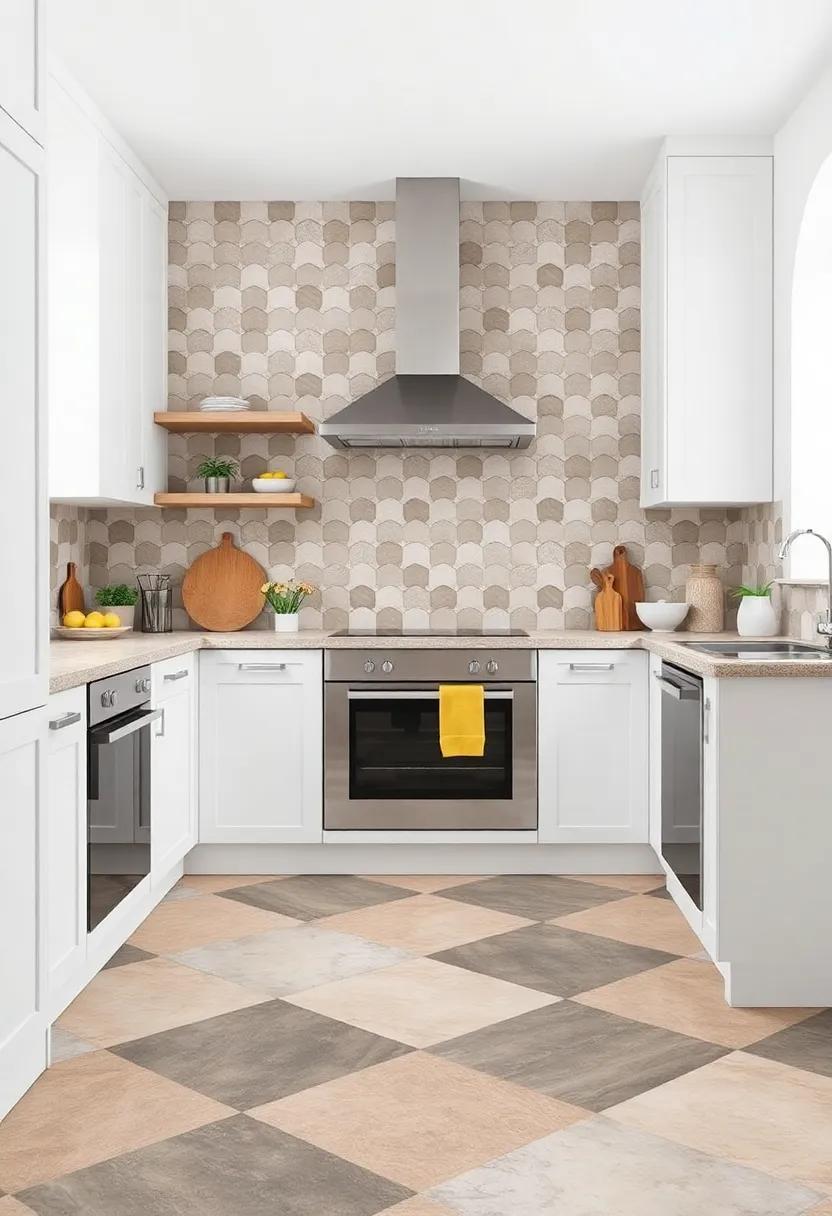
Incorporating geometric designs into rustic kitchen tiles is a delightful way to merge traditional charm with a contemporary edge. The clean lines and sharp angles of geometric patterns can enhance the organic warmth of natural materials like terracotta or reclaimed wood. Hexagons, chevrons, and subway tiles arranged in unique formations can draw the eye and create a focal point that elevates the rustic aesthetic. Pairing these patterns with earthy colors—think muted greens, soft blues, and warm oranges—allows you to maintain the inviting feel of a cottage kitchen while embracing modern design principles.
When selecting tiles, consider mixing textures and finishes to add depth and interest. As a notable example, a matte finish can work beautifully alongside glossy geometric tiles, creating a contrast that captivates. You can also play with layout options to further enhance the visual complexity of your kitchen floor. Options such as herringbone or basket weave not only stand out but also resonate with the ancient essence of rustic spaces. Here’s a quick reference table to help you choose:
| Tile Type | Texture | Color Palette |
|---|---|---|
| Hexagonal Tiles | Matte | Earthy Tones |
| Subway Tiles | Glossy | Soft Pastels |
| Chevron Patterns | Textured | Warm Neutrals |
Seamless Spaces: The Harmony of Open Floor Plans with Cottage Kitchen Tiles
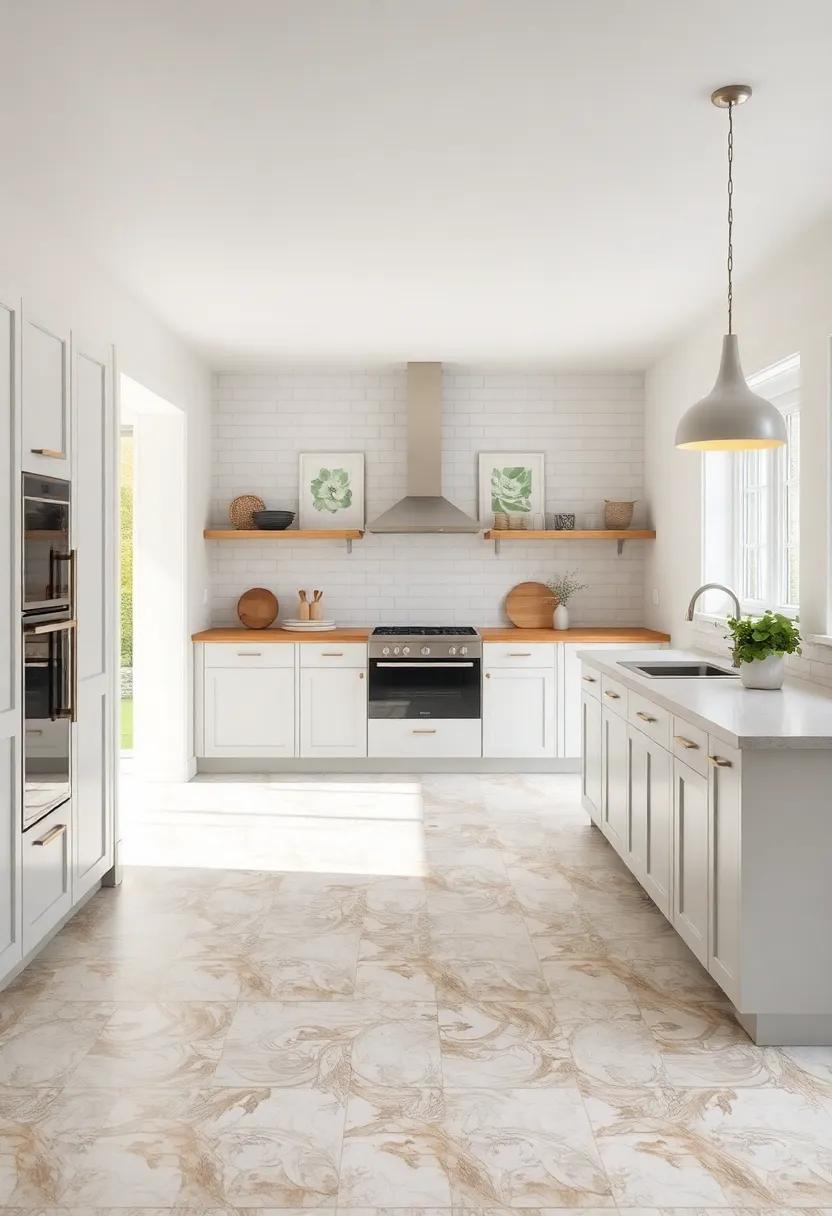
Open floor plans evoke a sense of spaciousness and airiness, allowing the kitchen to seamlessly blend into the living area. When paired with cottage kitchen tiles, these designs create a harmonious atmosphere that fosters both functionality and comfort. The right tiles can act as a foundation for an inviting space, enhancing the overall aesthetic with their textured finishes and rustic charm. The interplay of colors in cottage tiles—ranging from soft pastels to vibrant hues—complements various decor styles, making it easy to achieve a cohesive look throughout your home.
To fully embrace the charm of open spaces, consider incorporating tiles that reflect natural elements. Opt for handcrafted ceramics or mosaic patterns that evoke a sense of the countryside. Some tile options to explore include:
- Subway Tiles: Timeless and versatile, perfect for an elegant backdrop.
- Terracotta Tiles: Add warmth and character, ideal for cottage aesthetics.
- Patterned Tiles: Great for making bold design statements and adding visual interest.
| Tile Type | Description | Ideal Color Palette |
|---|---|---|
| Subway tiles | Sleek and simple, perfect for creating a clean finish. | White, Grey, Soft Blue |
| Terracotta Tiles | Earthy tones that bring warmth and rustic charm. | Burnt Orange,Deep Red,Brown |
| Patterned Tiles | Intricate designs that enhance the uniqueness of the space. | Multi-Colored, Floral Patterns, Geometric |
Enhancing Natural Light: How Floor Tiles Influence Kitchen Brightness
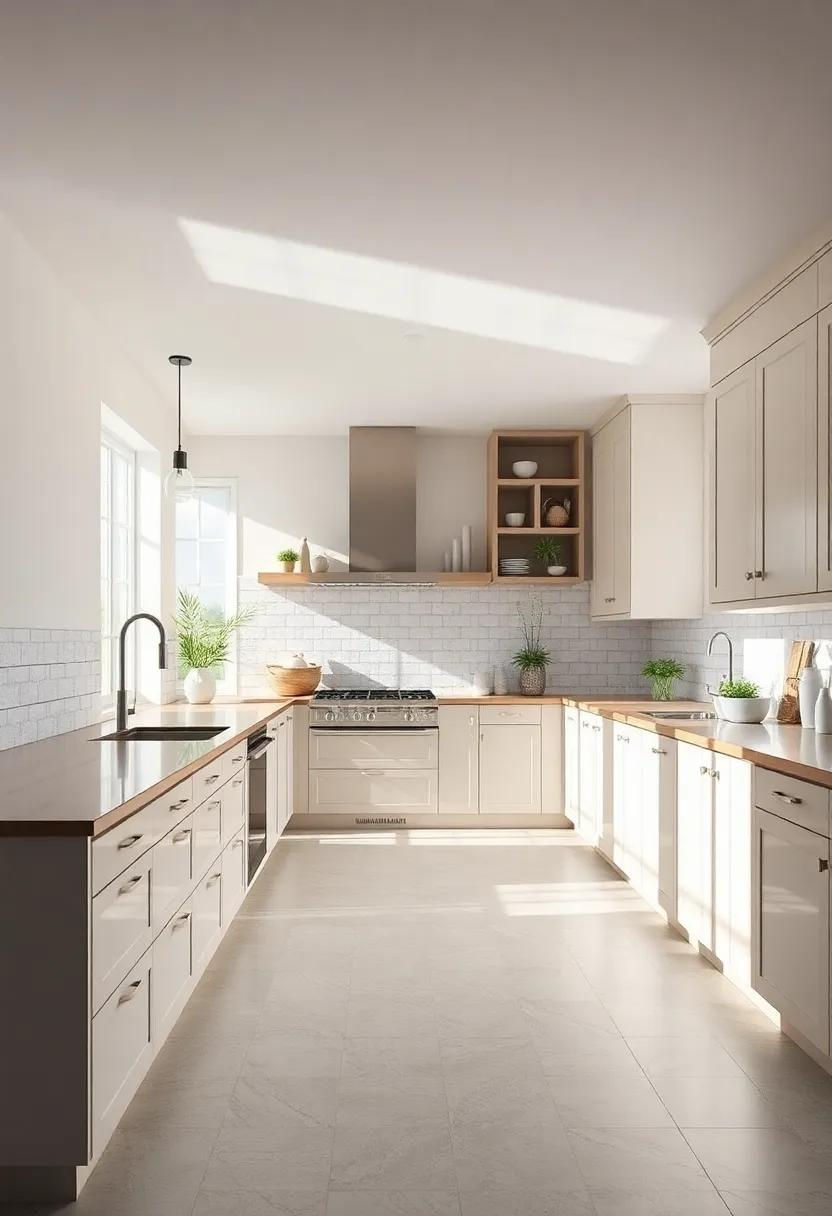
When it comes to maximizing the natural light in your cottage kitchen, the choice of floor tiles can considerably enhance the overall ambiance. Light-colored tiles,such as soft whites,warm beiges,or gentle pastels,reflect sunlight beautifully,creating an inviting and airy atmosphere. The right selection of tiles can make a small kitchen feel larger and more open, ultimately brightening up the entire space. Here are some factors to consider when choosing tiles for optimal brightness:
- Color: Lighter shades tend to bounce light, whereas darker colors absorb it.
- Finish: Glossy or polished finishes reflect more light compared to matte surfaces.
- Texture: Tiles with subtle textures can add depth while still maintaining luminosity.
Moreover, the layout and arrangement of tiles play a crucial role in how light is perceived in the kitchen.Consider laying tiles in a diagonal pattern; this can create the illusion of a larger space and guide the eye towards light sources. Another effective method is to use larger format tiles, which can minimize grout lines, allowing for a more continuous surface that harmonizes with any light that enters the room. The following table outlines potential tile choices and their impact on light reflection:
| Tile Type | Color | Light Reflection |
|---|---|---|
| Ceramic | Soft white | High |
| Natural Stone | Warm Beige | Medium |
| Porcelain | Light Gray | High |
| Vinyl | Pastel Blue | Medium |
Layered Design: Combining Rugs and Tiles for a Cozy Cottage Atmosphere
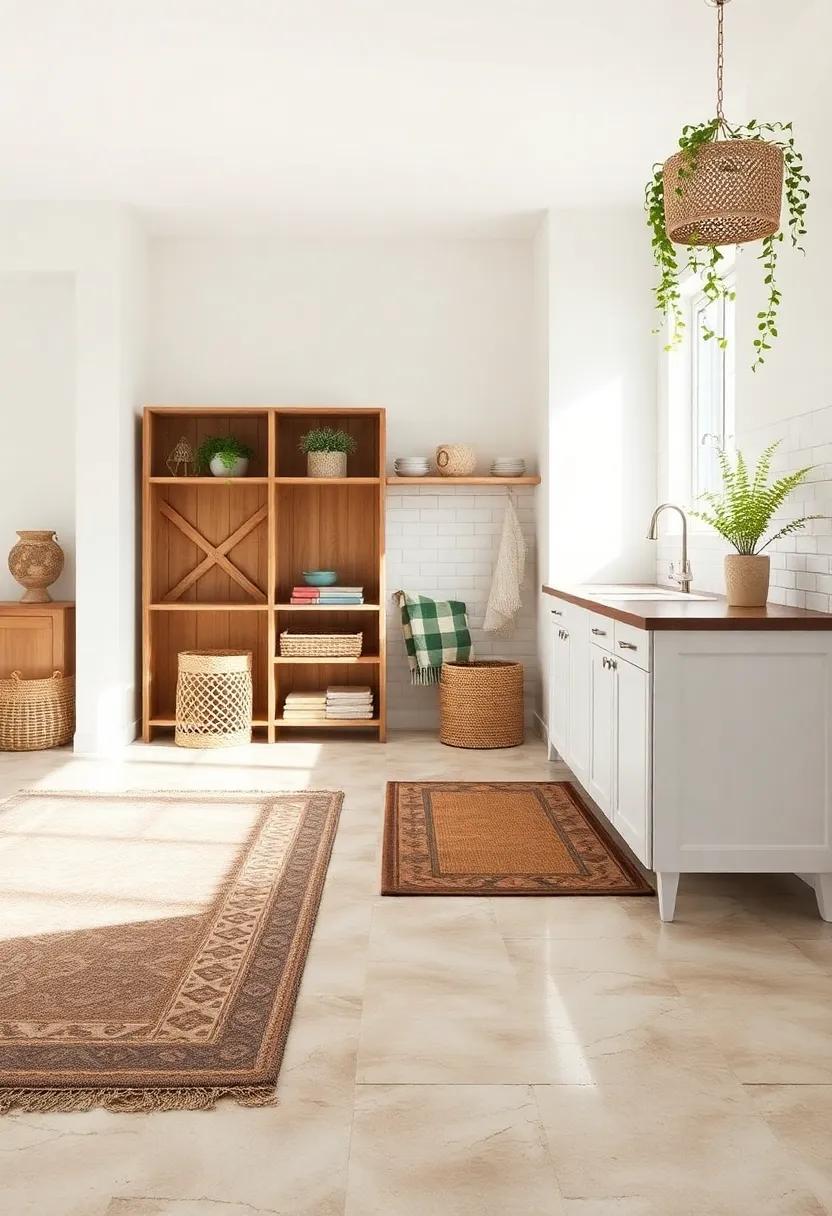
In a cottage kitchen, the perfect blend of rugs and tiles can create a harmonious, inviting space that exudes warmth. Layering begins with selecting tiles that reflect your rustic aesthetic, such as vintage-patterned ceramic or natural stone options. Once you have your base laid, consider incorporating a variety of rugs to soften hard surfaces and introduce texture. Choose fabrics that complement the color palette and style of your tiles; think woven jute, soft wool, or a cozy cotton blend. The addition of these textiles serves not only to enhance comfort but also to define different zones within your kitchen.
when layering, focus on a mix of patterns and colors that harmonize rather than clash. For instance, a subtly patterned rug pairs beautifully with simple, solid-colored tiles. Here are some key considerations to ensure a cohesive look:
- Color Coordination: Match or complement the flooring color to the rug hues.
- Texture Play: Combine different textures to create visual interest.
- Size Matters: Choose rugs that are proportionate to the size of the kitchen space.
| Tile Type | Ideal Rug Material | Recommended Patterns |
|---|---|---|
| Ceramic | Wool | Geometric |
| Natural Stone | Jute | Botanical |
| Vinyl | Cotton | Striped |
Farmhouse Flair: Subtle Shabby Chic Elements in kitchen Tile Choices
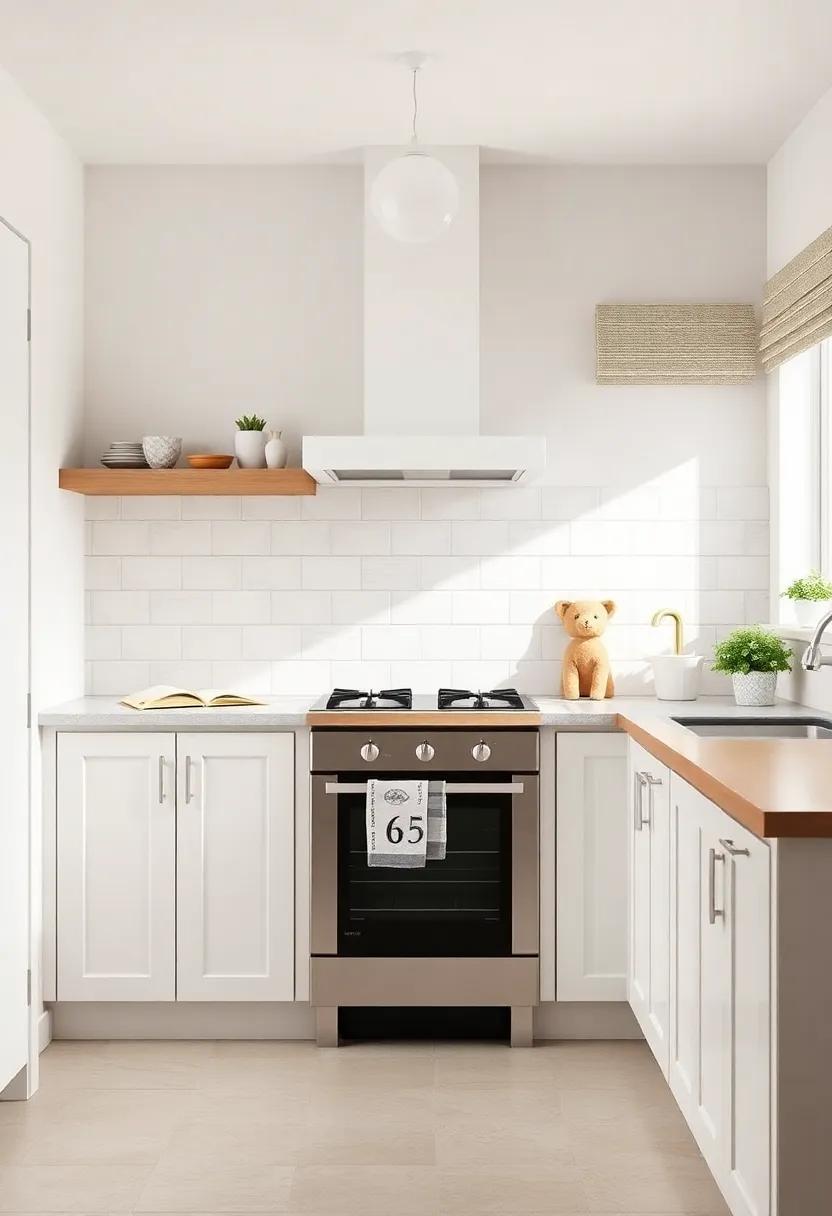
To infuse your kitchen with a touch of rustic elegance, consider subtle shabby chic elements in your tile choices.Selecting tiles with a worn or distressed finish can perfectly complement the farmhouse style, adding character and a lived-in feel to your space. Look for options like:
- Textured ceramic tiles that mimic the look of reclaimed wood
- Soft pastel colors that evoke a calm countryside atmosphere
- Natural stone tiles featuring irregular shapes for an organic feel
another way to achieve that ideal cottage aesthetic is by incorporating tiles with intricate patterns or vintage designs. These eye-catching details draw attention while remaining understated enough to blend seamlessly into a variety of kitchen decors. Consider choosing:
- Penny tiles arranged in charming layouts
- Hand-painted tiles that tell a story of craftsmanship
- Subway tiles in muted shades for a timeless appeal
Contrasting Finishes: Balancing Glossy and Matt Tiles for Visual Interest
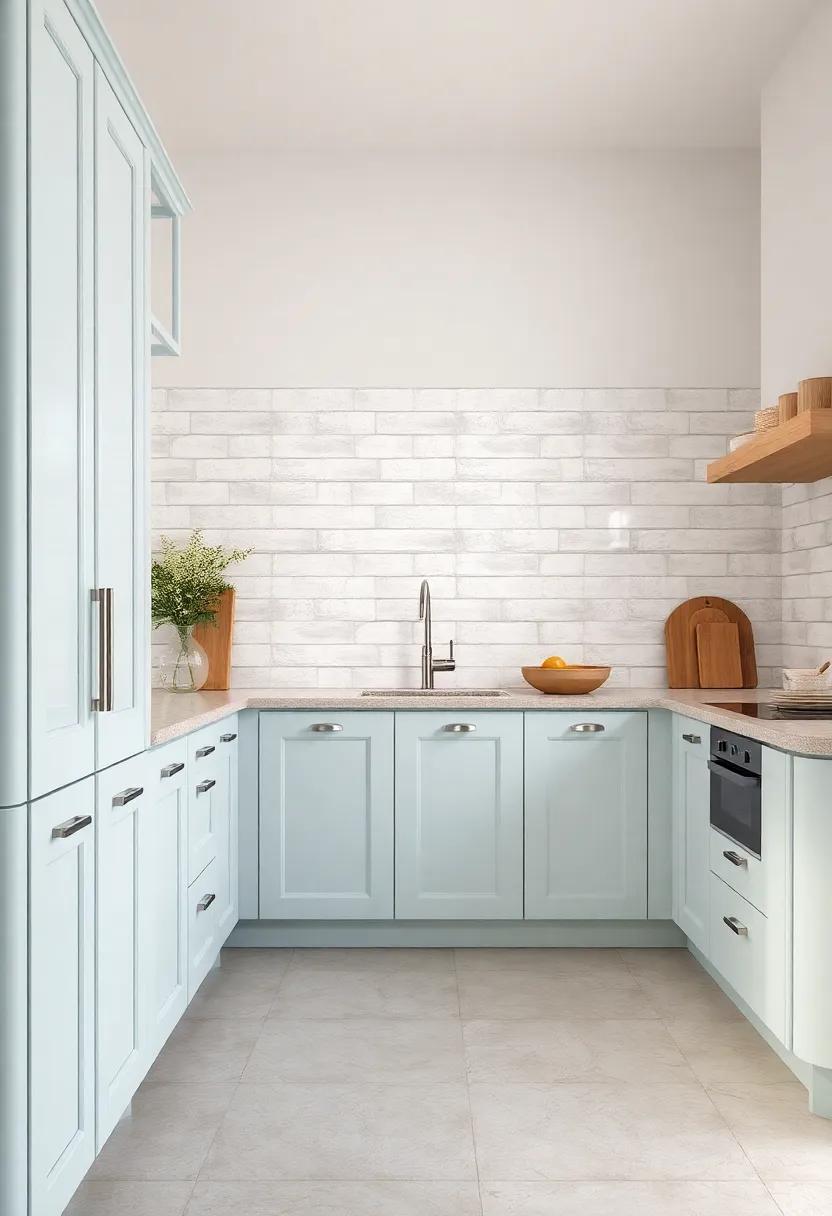
In the quest for a charming cottage kitchen, the interplay between textures can create a harmonious and inviting atmosphere. By combining glossy and matte tiles, you can draw visual intrigue while maintaining the rustic appeal essential in such spaces. Glossy tiles, with their reflective surfaces, can brighten the room and create a feeling of openness. Their sheen catches the eye and often works beautifully in areas that benefit from light, such as near windows or under pendant lighting. In contrast, matte tiles offer a grounded, inviting feel, perfect for high-traffic areas prone to spills and scuffs. Their softer finish can provide a sense of warmth and comfort that resonates well with the cozy cottage aesthetic.
To achieve a balanced design,consider a few key combinations that work in tandem:
- Accent Walls: Use glossy tiles as accent features on one wall to create a focal point,while keeping the other surfaces matte.
- Color Coordination: Pair earthy tones in matte finishes with brighter, more vibrant glossy tiles to create depth without overwhelming the space.
- Transition Areas: In open-concept kitchens, utilize glossy tiles in the dining area and matte tiles in cooking zones to delineate spaces effortlessly.
| Finish Type | Pros | Cons |
|---|---|---|
| Glossy | Brightens spaces, Easy to clean | shows smudges and dirt, Can be slippery |
| Matte | Warm, Non-slip | Can stain, Harder to clean |
Rustic Meets Modern: Fusion of styles in Cottage Kitchen Tile Choices
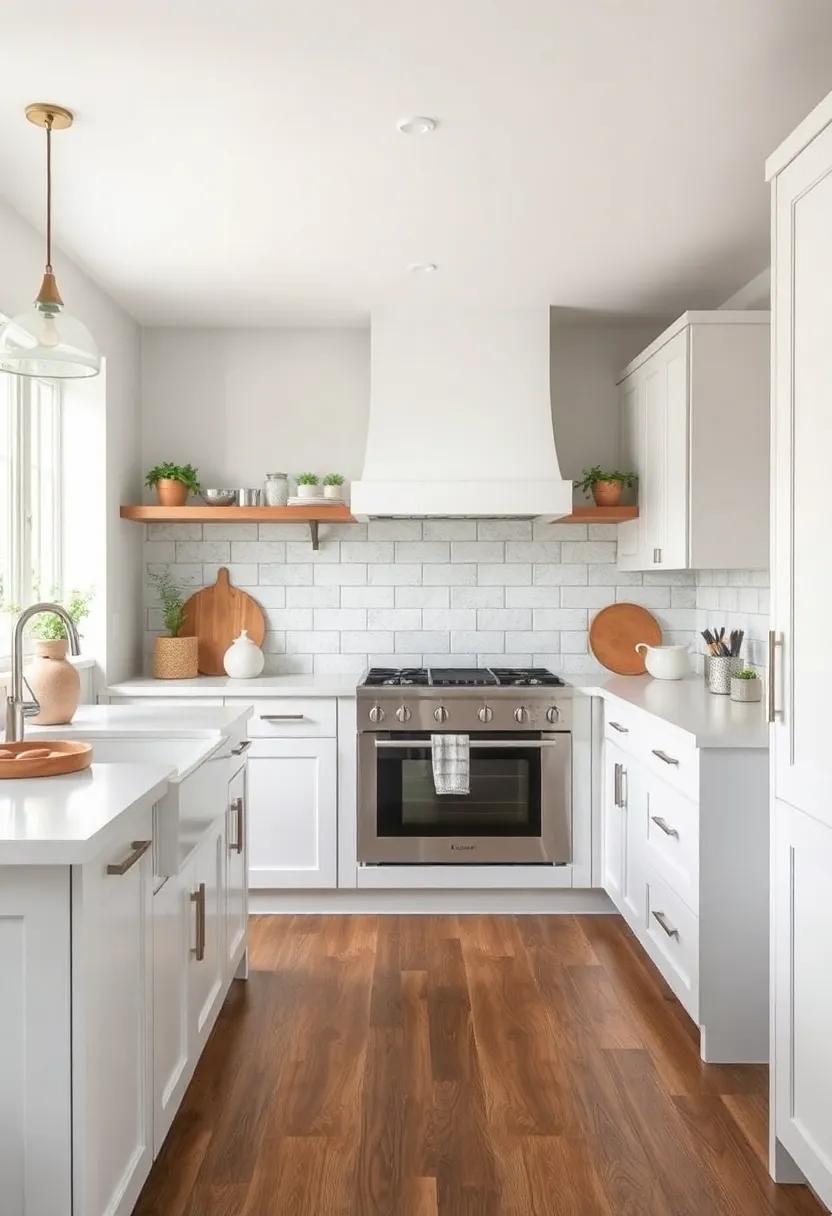
When designing a cottage kitchen, the right tile choice can seamlessly blend rustic warmth with modern aesthetics. For those seeking a harmonious fusion, consider natural stone tiles that evoke the organic charm of the countryside while integrating sleek, clean lines typical of contemporary design. The use of larger format tiles can elongate the space, providing a visual flow that complements both rustic cabinetry and modern appliances. Choose earthy tones like warm grays, browns, and creamy whites to retain that cozy cottage feel while ensuring a polished, modern finish.
To truly enhance the charm of your cottage kitchen, incorporating patterned tiles can create visual interest and inject personality into the design. Opt for geometric or floral motifs that reflect traditional craftsmanship, paired with solid, neutral tiles to balance out the busy patterns without overwhelming the senses. Mixing textures, such as pairing smooth ceramic tiles with more rugged terracotta, can add layers and depth, enhancing the visual appeal while making the kitchen inviting and stylish. Here are a few options to consider:
| Tile Type | Style Influence | Color Palette |
|---|---|---|
| Natural stone | Rustic | Earthy Tones |
| Ceramic | Modern | Neutrals |
| Terracotta | Traditional | Warm Hues |
| Patterned Tiles | Eclectic | Varied Colors |
accessorizing with Tiles: Incorporating Decorative Elements in Your Design
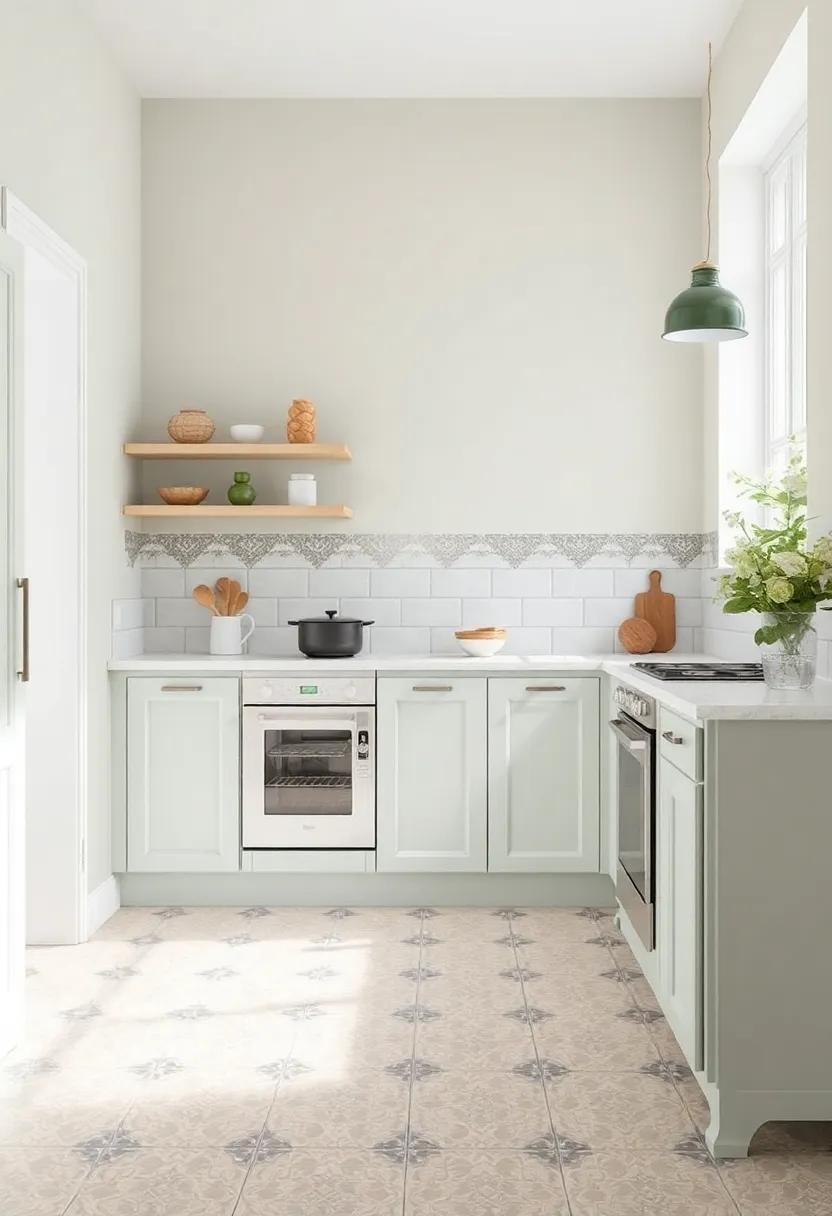
Incorporating decorative tiles into your cottage kitchen can create a unique focal point that captures the essence of rustic charm. Consider using hand-painted ceramic tiles for a touch of artisanal elegance, featuring designs that reflect nature or vintage patterns. To enhance the overall aesthetic, think about mixing different sized tiles; mosaics, borders, and accent pieces can serve as decorative elements that break the monotony of a single tile design. Examples include:
- Border tiles: Use these to outline your main tile layout.
- Mosaic accents: Create a small backsplash feature behind the sink or stove.
- Feature walls: Highlight a section of wall with a patterned tile arrangement.
Combining these tiling techniques not only heightens visual interest but also adds depth to the room. For a cohesive look,consider using a color palette for your decorative tiles that complements your cabinetry and countertops.The following table illustrates several color combinations that can elevate your kitchen’s style:
| color Pairing | Suggested Tiles | Style Influence |
|---|---|---|
| Soft Blue & White | Subway Tiles,Cotto | Classic Cottage |
| Earthy Greens & beige | hand-painted Terracotta | Warm Rustic |
| Muted Reds & Cream | Glazed Ceramic | Vintage Chic |
In Retrospect
In wrapping up our exploration of rustic charm in cottage kitchen floor tiles,it’s clear that the right flooring can seamlessly tie together the warmth and character of your space. Whether you opt for the timeless elegance of terracotta, the rugged appeal of natural stone, or the versatility of reclaimed wood, each choice envelops your kitchen with a sense of history and home.
as you embark on this design journey, remember that the perfect tile isn’t just about aesthetics; it’s about creating an environment where memories are made and laughter resonates. So,take your time,savor the selections,and embrace the beauty of rustic living. With the right tiles underfoot, your cottage kitchen will not only be a culinary haven but also a heartfelt invitation to gather, create, and thrive in the spirit of simplicity and charm. Happy decorating!
As an Amazon Associate I earn from qualifying purchases.
 theFASHIONtamer Where Style Meets Space, Effortlessly
theFASHIONtamer Where Style Meets Space, Effortlessly 